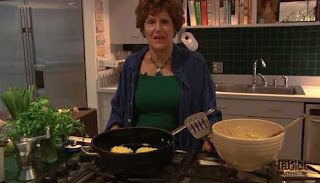Livni partners with Green Movement; party advocates
public transportation reform, passing environmental protection law.

Passing a Basic Law for environmental protection and
creating a long-term blueprint for the Israeli energy market will be key
components of The Tzipi Livni Party’s platform, the party said on Thursday.
The announcement came as Livni presented the party’s environmental agenda together with Green Movement chairman Alon Tal, No. 13 on their joint Knesset candidates list, at the party’s Tel Aviv office.
The Tzipi Livni Party also advocates public transportation reform, maintenance of open spaces for future generations, and a new clean-tech industry development program.
“We are bringing today strategic link between two movements that want to make a change in Israel,” Livni said.
“Change is much more than an additional Knesset seat – it is promoting the issues and values that the two parties believe in. The need to reach a political settlement, work for equal share of the burden and economic and social improvement require profound change and detailed plans in order to ensure our quality of life in Israel. Israel lags in comparison to other developed countries, and it is time to change the face of Israel’s renewability together with the Green Movement.”
The announcement came as Livni presented the party’s environmental agenda together with Green Movement chairman Alon Tal, No. 13 on their joint Knesset candidates list, at the party’s Tel Aviv office.
The Tzipi Livni Party also advocates public transportation reform, maintenance of open spaces for future generations, and a new clean-tech industry development program.
“We are bringing today strategic link between two movements that want to make a change in Israel,” Livni said.
“Change is much more than an additional Knesset seat – it is promoting the issues and values that the two parties believe in. The need to reach a political settlement, work for equal share of the burden and economic and social improvement require profound change and detailed plans in order to ensure our quality of life in Israel. Israel lags in comparison to other developed countries, and it is time to change the face of Israel’s renewability together with the Green Movement.”
A Basic Law – part of Israel evolving constitution – that provides for environmental protection would allow for the preservation of the country’s natural resources for generations to come, according to the party. In enacting such legislation, the government could help prevent pollution and depletion of natural resources as well as ensure sustainable development, conservation of biodiversity, and cooperation with other countries and international organizations on environmental issues, it said.
 The Rabbis teach (Ta’anit 11a) that “at a time when the
community is suffering, no one should say, ‘I will go home, eat, drink, and be
at peace with myself.’” To effectively aid those who are suffering, we need the
cooperation and collaboration of each and every individual. We need strong
individuals, effective non-profits, and committed states. However, we also need
to recognize the most powerful collective body available to address the
suffering. In our society, the mechanism that represents the people is the
government, and it must be effective. Government does not always have to be big
to be effective, but oftentimes it does, especially when responding to disasters
on a large scale.
The Rabbis teach (Ta’anit 11a) that “at a time when the
community is suffering, no one should say, ‘I will go home, eat, drink, and be
at peace with myself.’” To effectively aid those who are suffering, we need the
cooperation and collaboration of each and every individual. We need strong
individuals, effective non-profits, and committed states. However, we also need
to recognize the most powerful collective body available to address the
suffering. In our society, the mechanism that represents the people is the
government, and it must be effective. Government does not always have to be big
to be effective, but oftentimes it does, especially when responding to disasters
on a large scale. 


 What’s Jewish about caring for the environment? This is
a core question that we, as leaders of Jewish organizations, ask ourselves all
the time. The Coalition on the Environment and Jewish Life (COEJL) was formed at
the Jewish Council for Public Affairs (JCPA) in 1993 to face humanity’s looming
environmental crisis and to mobilize the Jewish community to protect God’s
creation. Inspired by the Jewish traditions of stewardship, respect for God’s
creatures, injunctions not to be wasteful and traditions of social justice, our
shared mission is to unite the Jewish community in environmental efforts.
What’s Jewish about caring for the environment? This is
a core question that we, as leaders of Jewish organizations, ask ourselves all
the time. The Coalition on the Environment and Jewish Life (COEJL) was formed at
the Jewish Council for Public Affairs (JCPA) in 1993 to face humanity’s looming
environmental crisis and to mobilize the Jewish community to protect God’s
creation. Inspired by the Jewish traditions of stewardship, respect for God’s
creatures, injunctions not to be wasteful and traditions of social justice, our
shared mission is to unite the Jewish community in environmental efforts. 

 1. God created the universe.
1. God created the universe. 

 *Teaching
moment: Think about your guest list and what interests your invitees share.
If several your guests are vegetarians, or committed meat eaters, consider
brining this topic into the meal as well. If there are people who are involved
in social justice causes, or grow their own herbs, consider what kind of menu
and discussion questions would draw them in most.
*Teaching
moment: Think about your guest list and what interests your invitees share.
If several your guests are vegetarians, or committed meat eaters, consider
brining this topic into the meal as well. If there are people who are involved
in social justice causes, or grow their own herbs, consider what kind of menu
and discussion questions would draw them in most.
